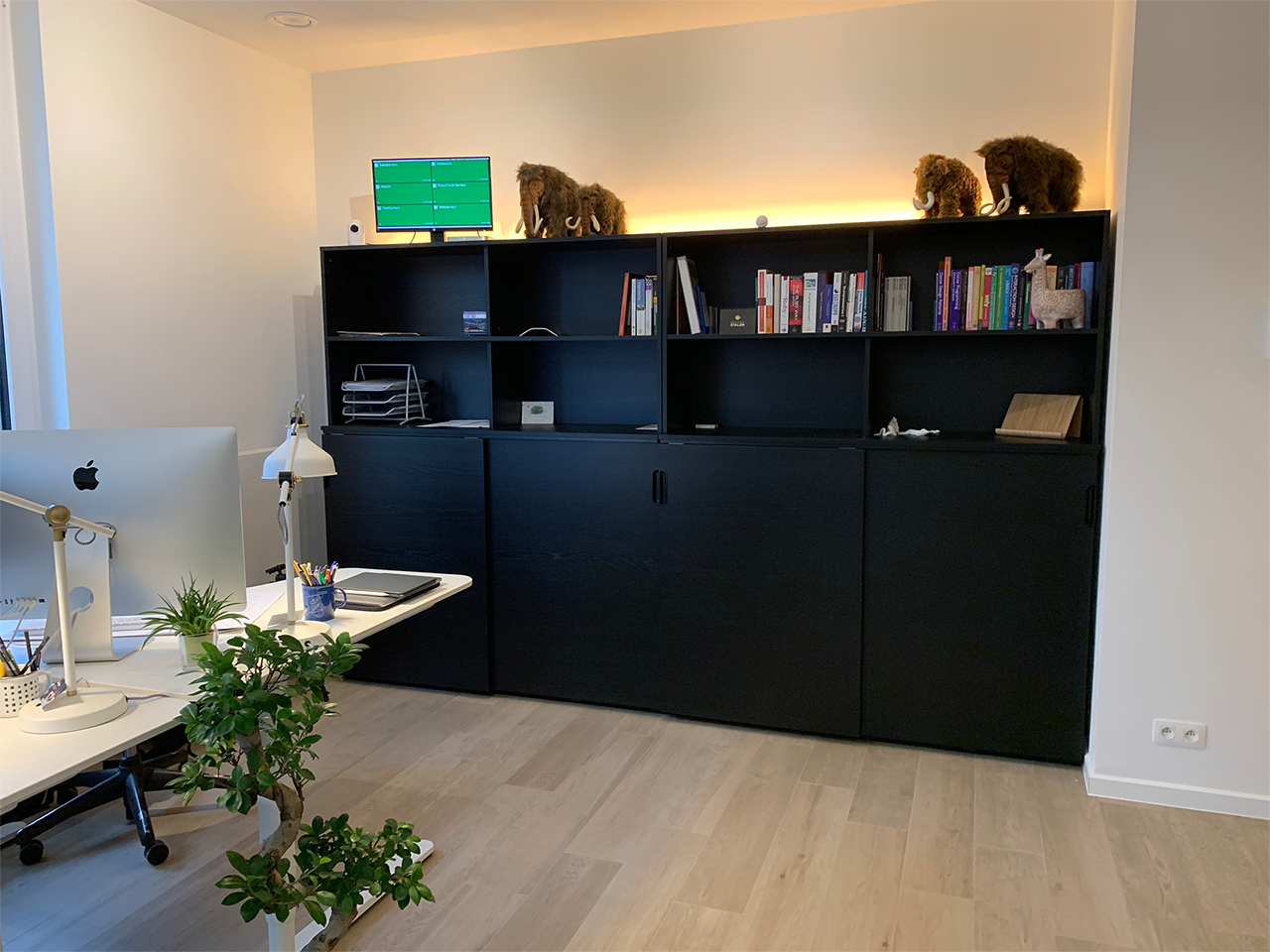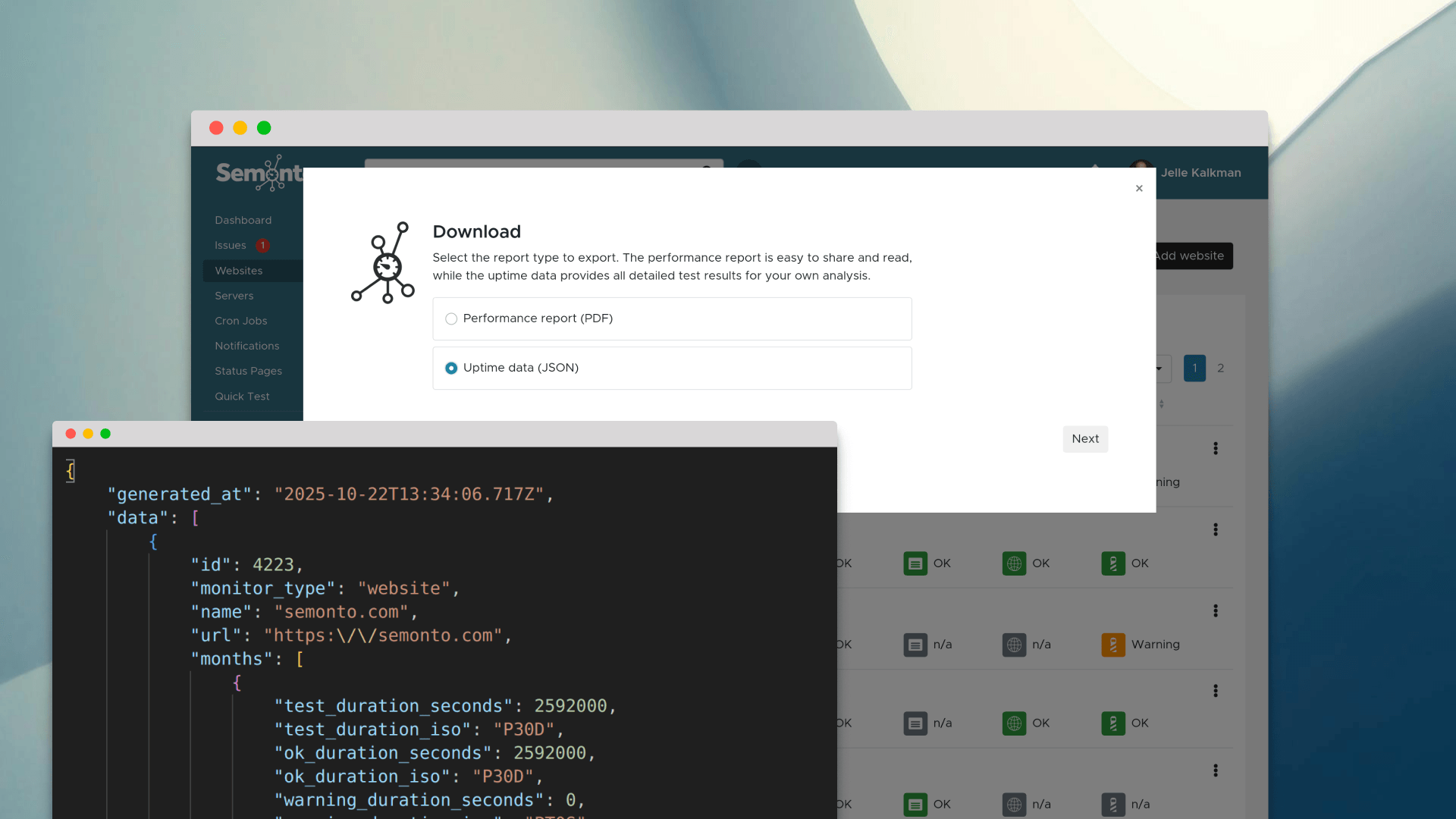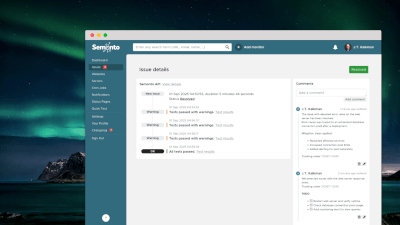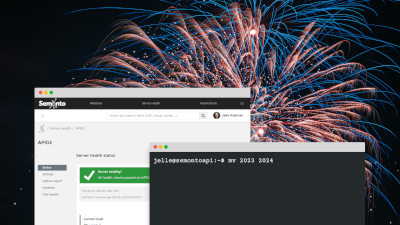As 2020 is almost over: It's time to look back.
We had a great start of the year, moving from Ghent into a new office in Antwerp in January 2020. Feel free to stop by for some coffee if you are nearby and once the pandemic is completely over.
In March, we introduced team support for Semonto. You can now easily invite your colleagues to your Semonto account without having to share your credentials. The current version covers the basics. We will later improve this further by adding different roles and more.
In the same month, the pandemic hit Belgium, resulting in a series of lockdowns. We tried to help out by sharing our tips and tricks for working remotely. We also ran a campaign allowing businesses who were affected to temporarily use Semonto for free.
In June, we redesigned our status pages You can now link to your website from your status page and upload your logo. We have more improvements in the pipeline. We also redesigned our alerting emails and improved the user experience so that you can see the affected servers instantly.
We also released more extended HTTPS and SSL monitoring Semonto is now checking your SSL certificates more deeply, is checking them against revocation lists, will warn you when the certificate is about to expire and is validating the chain. Anything to be sure that your website is fully secure and covered.
In August, we had an open position for an online marketeer, which we filled in September 2020. The Semonto team is growing.
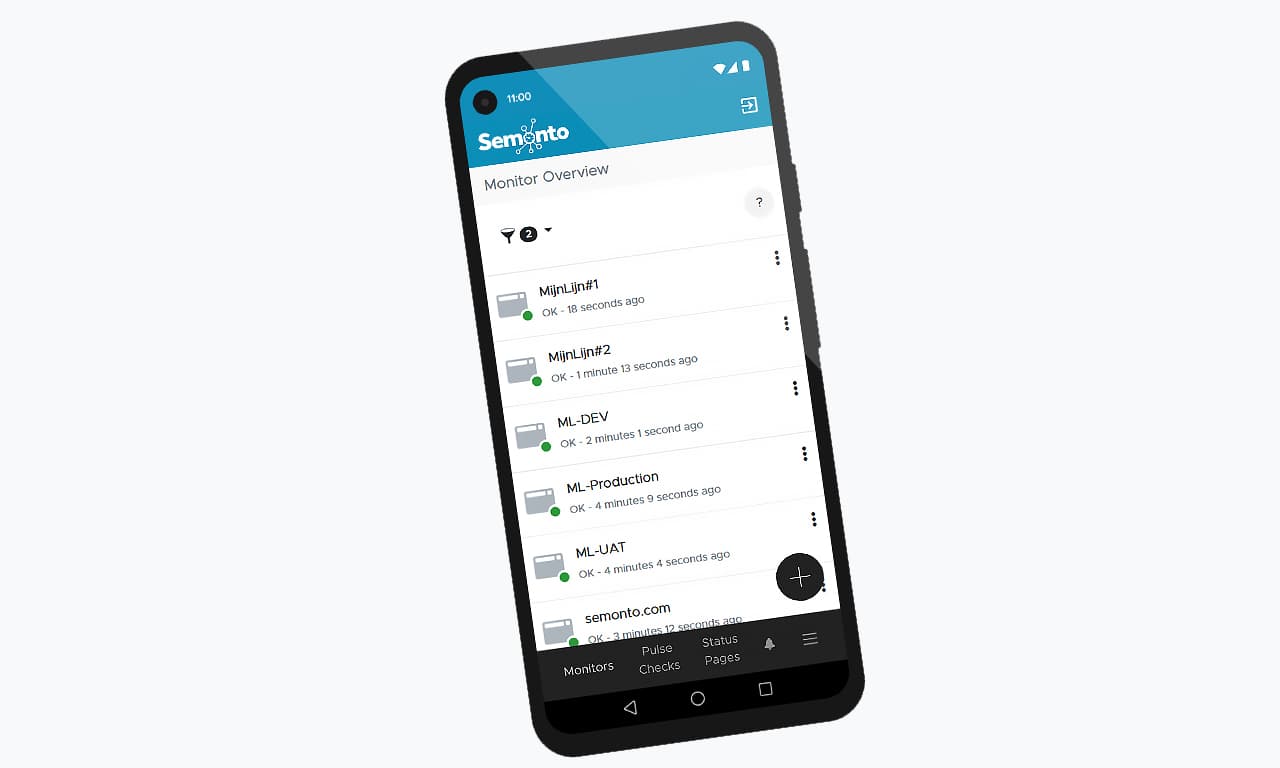
We released an Android version of our mobile application in October 2020. This application allows you to quickly check the status of your websites, and get free push notifications and alerts in case there are issues with your websites.
Most people's email inboxes are already flooded, and tons of social applications are constantly sending push notifications. That is why in November, we introduced a new way to be alerted when critical servers or websites are down: We added old school phone support When your server is having issues, Semonto will ring your phone. This alert method is the perfect way to ensure that important messages do not get lost in the noise.
In November, we also changed our pricing model We went from an old pre-paid model based on the maximum number of tests per hour, to a more user-friendly subscription system based on the number of servers and features, to ensure that we have a match for every user of Semonto.
At the end of 2020, we added free public tools to our website. You can now easily enter a URL and our Website Reachability Tester will check the connection of the website from multiple locations. We also have a public HTTPS/SSL Certificate checker which you can use to quickly validate a certificate of a website, e.g. to verify whether your changes went live successfully.
During the year, we also had some interesting stories on our blog:
- The SEO impact of downtime and how to avoid it
- Now is the time to improve your online presence
- Does your website need HTTPS?
- Optimise your website for a crowded internet
- 6 ways an uptime report helps you to improve your website
- How to monitor a server that is not publicly accessible
- Why you should care about your business's uptime
- 7 ways to prepare your website for Black Friday and Cyber Monday
We also heavily tweaked Supervisor, the dashboard of Semonto, and simplified all flows to improve the user experience. We do love feedback, so if you have more feedback, please get in touch
As you can see: 2020 was pretty busy for us. We cannot wait until we can tell you what we are working on for 2021. We have quite some nice features in the pipeline. Stay tuned for more info.
In case you are not using Semonto to monitor the uptime of your website, or to get informed instantly when your website is having issues loading, feel free to sign up for the free trial of Semonto and get started with a few clicks.
